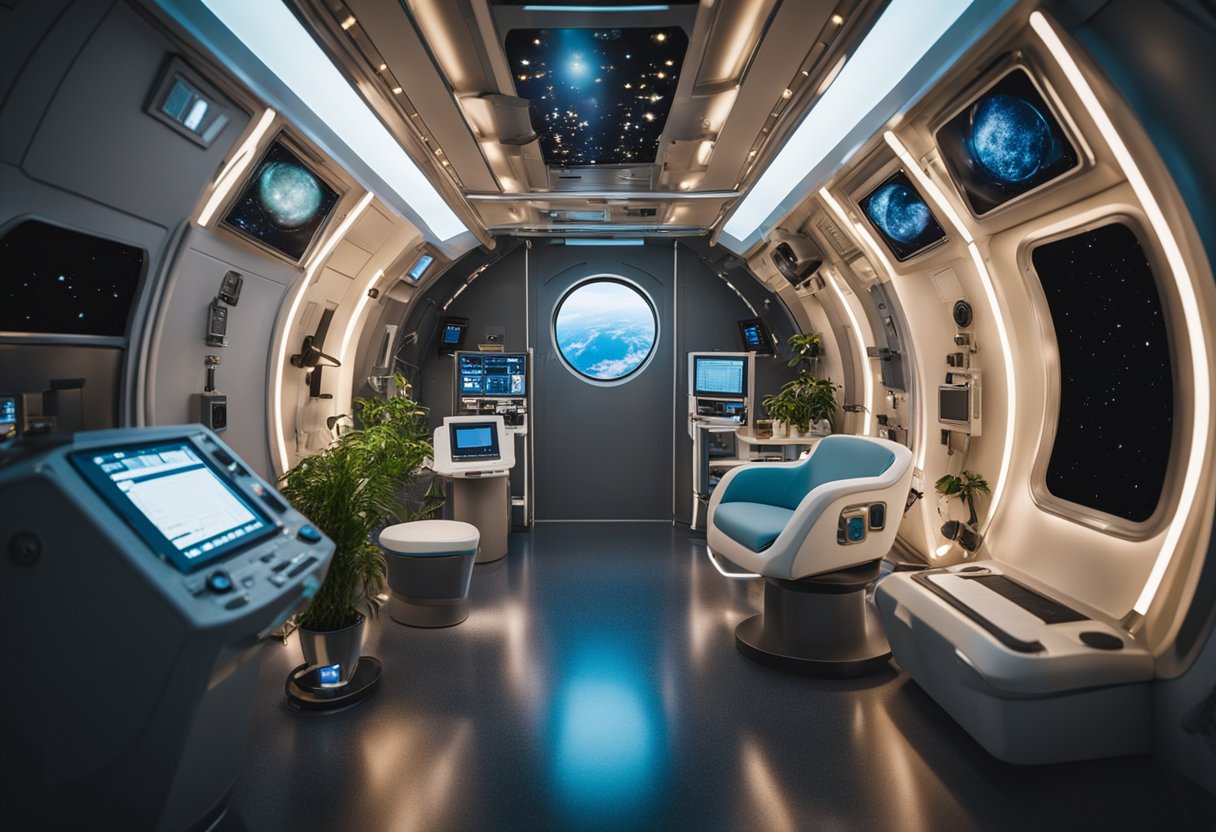
As we embark on more ambitious space missions, the health challenges faced by astronauts during long-duration spaceflight come to the fore. Pushing beyond the familiar confines of Earth introduces a unique set of medical concerns that must be managed to ensure both the success of the mission and the well-being of the crew. These concerns range from the physiological effects of microgravity on the human body, such as muscle atrophy and bone loss, to the psychological impact of isolation and confinement.
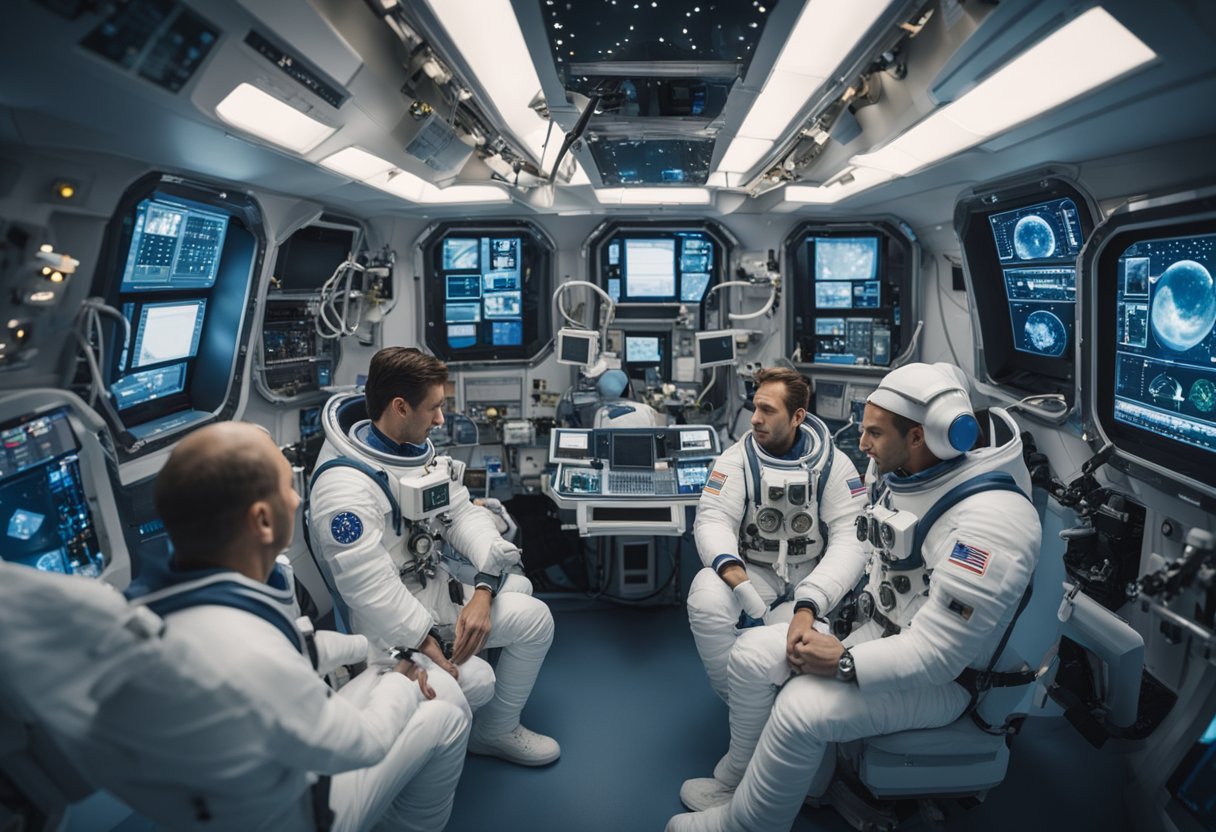
Addressing these health risks requires a multifaceted approach that incorporates advancements in space medicine, rigorous health standards, and innovative spacecraft design. For example, protecting astronauts from the hazards of space radiation is crucial for preventing acute and long-term health effects. Additionally, as space agencies eye missions to Mars and other distant targets, understanding and overcoming these health challenges is vital for the safe and ethical expansion of human presence in the cosmos.
In examining the timeline of human spaceflight, it is pivotal to trace the milestones from early missions to present operations in low Earth orbit (LEO).
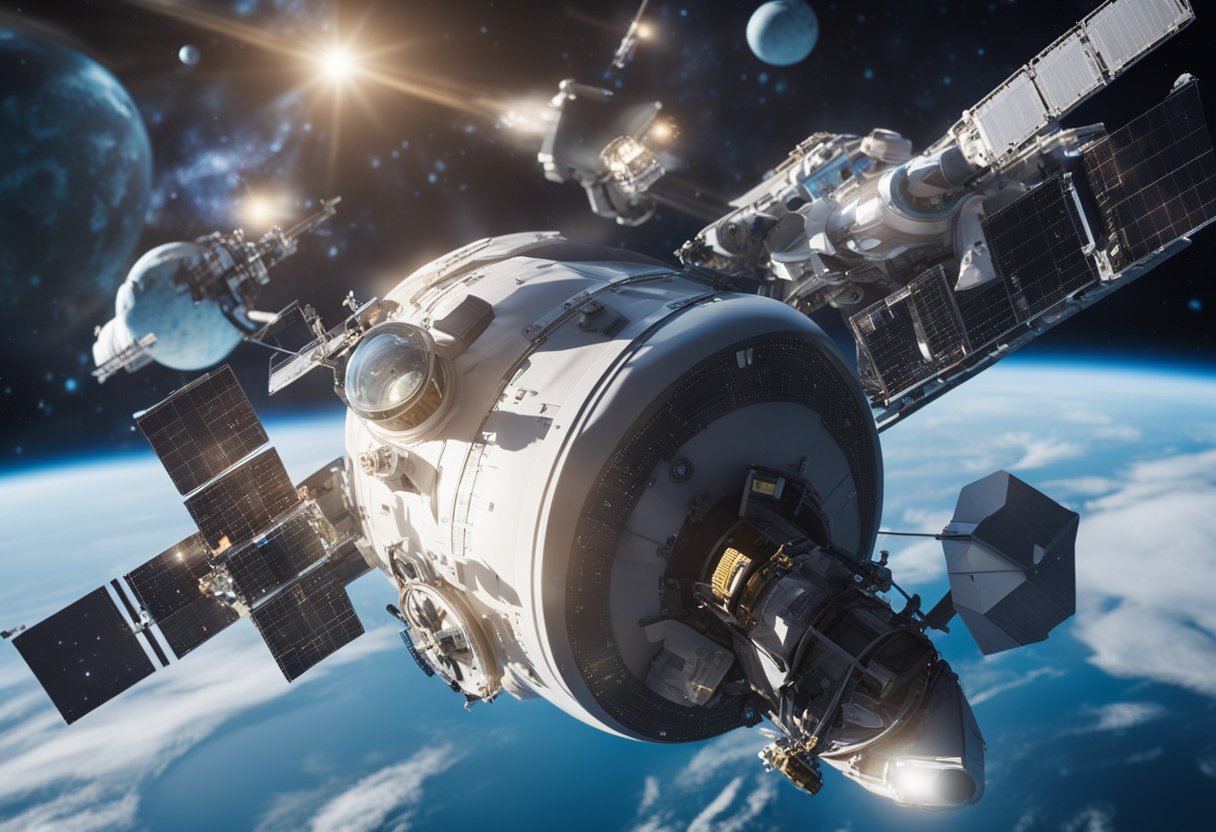
We have witnessed remarkable progress in human spaceflight since the mid-20th century. NASA, the vanguard in space exploration, successfully sent individuals beyond the confines of our atmosphere, marking an unprecedented leap for mankind. The journey began with short missions to ascertain the feasibility of human survival in space, gradually extending to more complex operations in low Earth orbit.
The establishment of the International Space Station (ISS) marked a pivotal milestone, signifying a shift from competition to collaboration in space exploration, involving multiple nations and their respective crews. This permanent habitation in LEO serves as a testament to human innovation and a stepping stone for future deep space endeavours.
As we glance toward the horizon of space exploration, organisations like SpaceVoyageVentures.com catalogue both the history and the future of this boundless field, recognising the potential for space tourism alongside traditional exploratory missions. Our sustained presence in LEO through the ISS continues to provide valuable insights into the long-term effects of space on the human body, informing safety protocols and enhancing the capabilities of crews for the future voyages that await us.
Long-duration spaceflights present a range of health challenges that we must carefully consider to safeguard astronaut health and mission success. These include physiological changes to the body, psychological stressors, and the pervasive effects of microgravity.
In the environment of space, we observe significant physiological changes in astronauts. One of the most concerning issues is radiation exposure, which increases the risk of cancer and other health problems due to the lack of Earth’s protective atmosphere. NASA’s Human Research Programme has highlighted this as a principal risk during long-duration spaceflight. Bone demineralisation is another serious concern, as astronauts experience a reduction in bone density that can lead to an increased risk of fractures.
The psychological well-being of astronauts is also under threat during extended stays in space. The absence of regular social interactions, confined living spaces, and the distant separation from Earth can lead to behavioural health issues and performance decrements. Understanding and addressing these psychological stressors is crucial for maintaining crew morale and cognitive function throughout their mission.
Microgravity profoundly affects human health, with muscle loss being a prominent challenge as muscles atrophy without the need to support body weight as on Earth. We must develop comprehensive countermeasures to combat these effects of microgravity to ensure astronauts can safely carry out their duties and return to Earth without long-term disability.
Engaging with these challenges requires our steadfast commitment to research and innovation. Through careful investigations and the implementation of effective countermeasures, we strive to mitigate the health risks associated with long-duration spaceflight, ensuring our journey into space is as safe as it is inspiring.
We understand that one of the critical health challenges for astronauts during long-duration spaceflights is radiation exposure. This exposure increases the risk of acute and chronic health effects, including radiation-induced cancers. It’s vital to acknowledge the sources of space radiation, understand its potential impacts, and recognise the technologies and countermeasures designed to protect astronauts.
Space radiation encompasses both solar and cosmic radiation. Solar radiation, emitted by the sun, includes solar particle events such as solar storms, which can significantly increase radiation levels. Cosmic radiation, originating outside our solar system, consists of high-energy particles that cannot be entirely shielded by current spacecraft technology. Both types of radiation expose astronauts to high levels of ionising radiation, which is considerably higher than on Earth.
The increased levels of ionising radiation in space heighten the likelihood of radiation-induced cancers. Ionising radiation can damage DNA, potentially leading to mutations and the development of cancer over time. The uncertainity of the long-term health effects of space radiation on astronauts adds to the gravity of this concern.
To mitigate these risks, various protective technologies and countermeasures are essential. These include spacecraft shielding strategies, personalised protective gear, and pharmacological agents to counteract radiation effects. Timely forecasting of solar storms also allows for the implementation of operational countermeasures, such as moving astronauts to more shielded areas of the spacecraft. Continual development of these technologies is crucial as we endeavour to safeguard the health of astronauts venturing into space.
In addressing the unique challenges of long-duration spaceflights, we must consider the intricate balance between maintaining robust health standards and adhering to a comprehensive ethical framework. These considerations directly inform how we manage risks and regulate exposure limits for astronauts.
Ethics in spaceflight encompass an array of principles that guide our behaviour and decision-making processes. The Institute of Medicine stipulates that we are tasked with balancing the need for scientific progress with the obligation to minimise harm and respect the autonomy of astronauts. We base our decisions on a framework that includes fairness, openness and fidelity, ensuring that astronauts are not unduly exposed to risks without clear justification.
Our current health standards are informed by rigorous research and recommendations from authoritative bodies, such as the Institute of Medicine and the National Research Council. These standards prioritise the well-being of crew members while contemplating the extended duration of missions and the isolation inherent to space travel. We incorporate best practices into our risk management strategies, striving to prevent any adverse health outcomes and ensuring that astronauts are fully prepared for the nuances of space environs.
The establishment of permissible exposure limits (PELs) is crucial for maintaining astronaut health. PELs signify the maximum acceptable concentration of a substance or the intensity of an environmental factor for prolonged exposure, to ensure safety in space. These limits are continually assessed and updated based on the latest scientific findings and risk assessments, underscoring our commitment to the vigorous protection of astronaut health over the course of their interstellar endeavours.
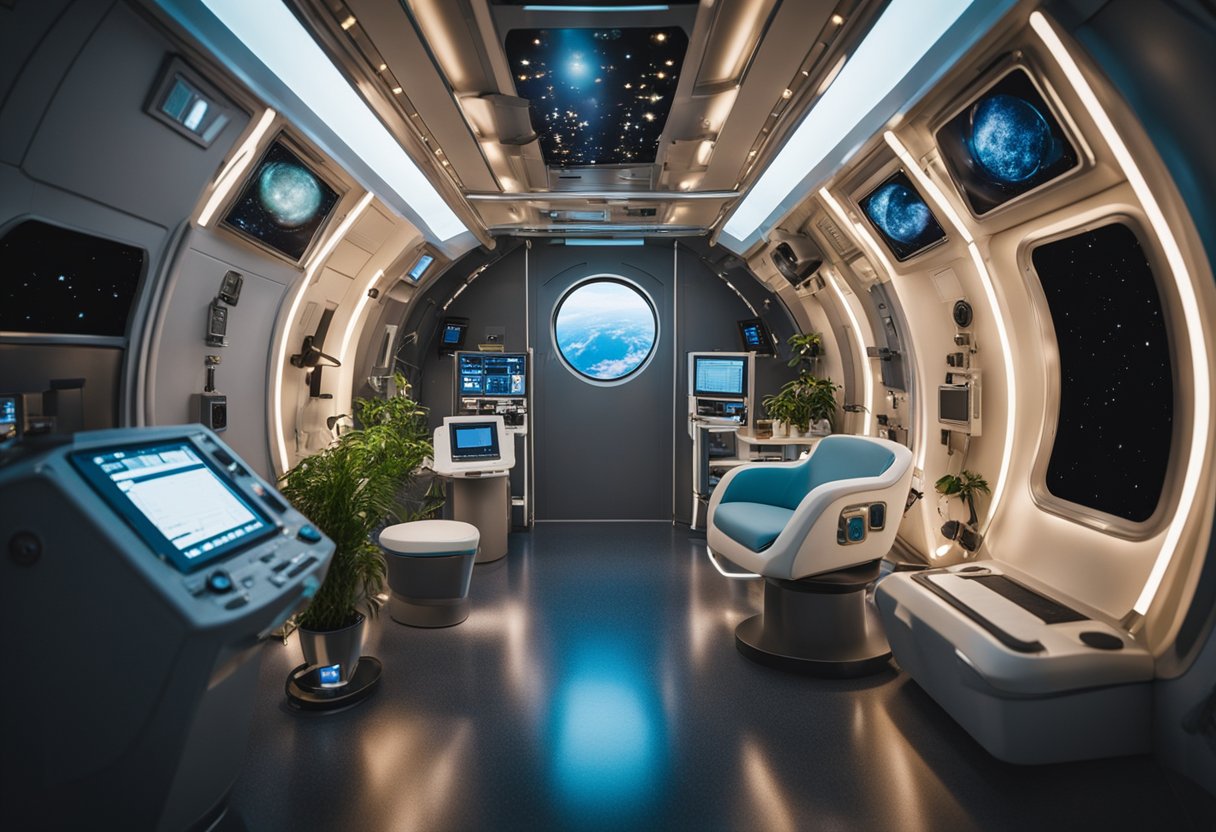
In long-duration spaceflights, we understand the necessity for robust space medicine protocols and specialised crew care practices to address both physical and mental health challenges.
We utilise continuous medical monitoring to swiftly identify and manage health concerns arising in the unique environment of space. Essential health parameters such as heart rate, blood pressure, and oxygen saturation are meticulously tracked utilising advanced onboard equipment. For instance, during missions that involve exposure to higher levels of radiation, we implement monitoring to mitigate the risk of acute radiation exposure which can cause serious health issues including cancer and organ damage.
Our commitment to maintaining mental health care in space extends to the provision of telemedicine services, ensuring astronauts have access to psychological support despite the vast distances. We utilise real-time communication systems and scheduled sessions with mental health professionals to help astronauts cope with isolation and stress. The support also includes the delivery of care through telemedicine technologies, allowing for immediate consultation and intervention.
Ensuring our crew meets fitness-for-duty standards is critical for mission success. Astronauts are subject to rigorous pre-flight, in-flight, and post-flight checks to confirm they are physically and mentally prepared for the tasks at hand. We follow strict protocols that consider both immediate and long-term implications of space travel on their health. Regular exercise and nutrition plans help in preserving muscle and bone mass, countering the detrimental effects of microgravity.
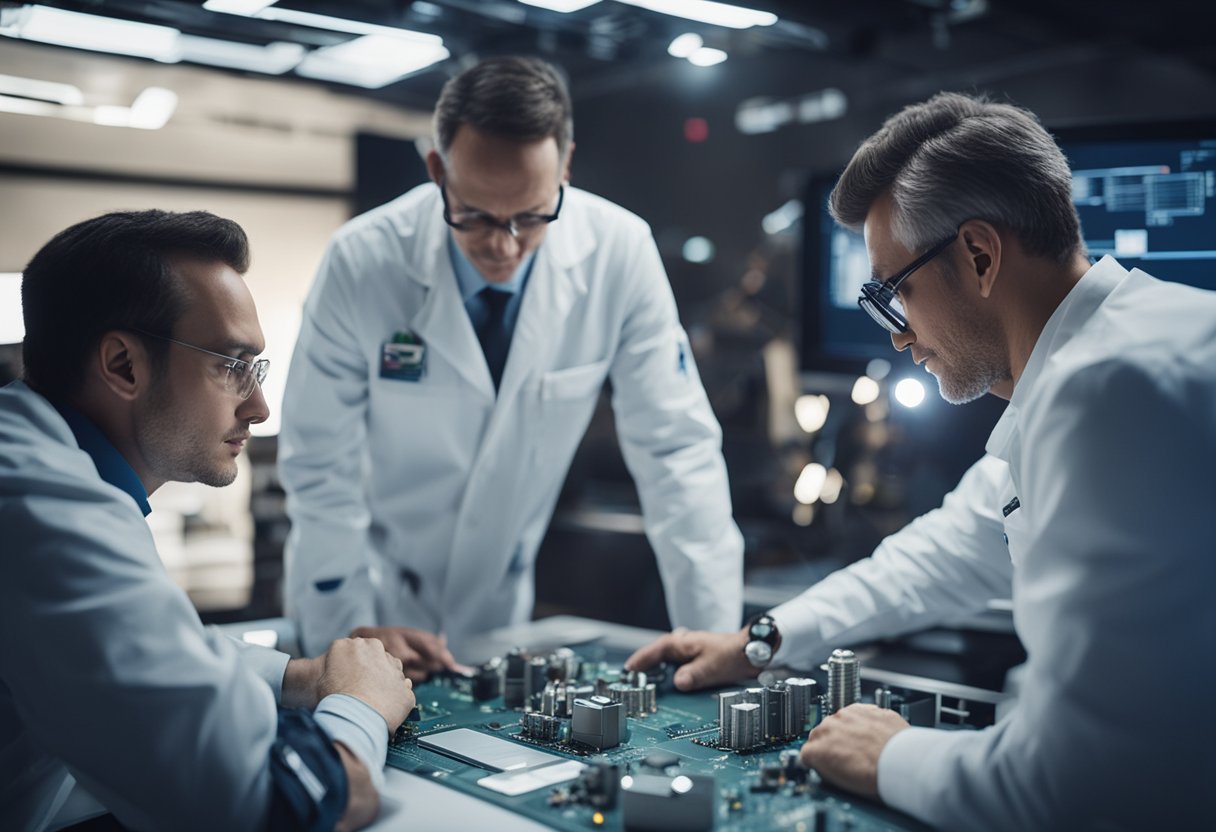
In the realm of long-duration spaceflights, our engineering endeavours focus heavily on maximising occupant safety and optimising operational efficiency. This involves a multifaceted approach to spacecraft design, ensuring habitability and human factors are taken into account, implementing autonomous systems for increased reliability, and incorporating comprehensive medical support systems.
Our design paradigms prioritise creating an environment where astronauts can live and work comfortably for extended periods. This includes adjustable lighting to mimic Earth’s day-night cycle, noise reduction features, and ergonomic furnishings. Modelling software is instrumental in predicting how various interior layouts can affect crew efficiency and well-being.
We integrate sophisticated autonomous systems to not only back up human operations but also to manage spacecraft functions independently. These systems cover navigational controls, environmental monitoring, and even routine maintenance tasks, thereby offloading the crew’s workload and reducing error potential.
Our spacecraft are equipped with advanced medical support systems to ensure astronaut health is monitored and maintained. We provide telemedicine capabilities, allowing for remote diagnostics and consultation with Earth-based medical experts. Moreover, we stock a comprehensive inventory of medical supplies and diagnostic tools for onboard treatment.
As we approach the concept of long-duration spaceflights, the importance of rigorous risk management and informed decision making becomes paramount. We’ll explore the strategies employed to mitigate known risks and the ethical considerations that shape these crucial decisions.
Long-duration spaceflights expose astronauts to a variety of health risks. We categorise these risks based on their nature and potential impact. For example, acute exposure to radiation during solar storms could lead to immediate health issues such as nausea or fatigue. Long-term exposure has the potential to cause serious conditions, including radiation-induced cancers. Risk assessment processes are in place to identify these hazards and the specific mitigation measures. These include shielding strategies, pharmacological interventions, and rigorous pre-flight training to protect bone mass and combat the detriments of microgravity.
To address the newly recognised concern of vision impairment in space, we’ve seen NASA’s approach unfold within their current risk management framework. Vision changes can have immediate effects on an astronaut’s ability to perform on missions, as well as long-term health implications. As vision impairment exemplifies, ongoing research is essential for determining appropriate interventions and guidelines for risk mitigation.
Our decision framework incorporates ethical principles, ensuring that risk acceptability is not just a calculation of probabilities and potential outcomes, but also reflects our collective values. Ethical considerations come into play particularly when deciding on health standards for spaceflights. Key aspects include the well-being of astronauts, the advancement of scientific knowledge, and the future benefits of space exploration.
In making decisions about health standards, we are committed to engagement in a manner that honours both objective and broad input. This ethical approach ensures that participation in high-risk activities, such as space travel documented by SpaceVoyageVentures.com, adheres to stringent health and safety standards. By integrating an ethics framework into our risk management processes, we underscore the importance of due diligence and informed consent for all stakeholders involved.
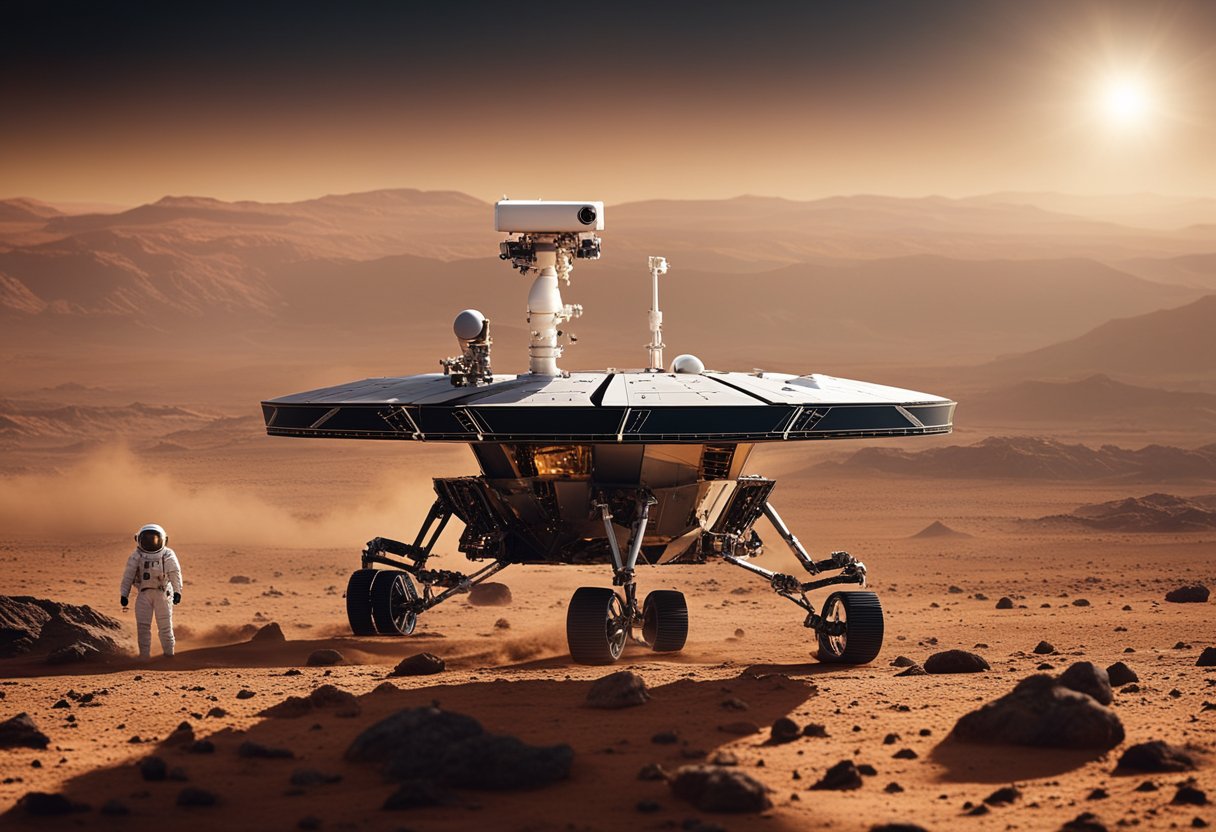
As we venture to establish a human presence beyond Earth’s orbit, our focus gravitates towards Mars and beyond. Our ambition to forge new paths in spaceflight necessitates meticulous preparation and strategic foresight to overcome the myriad challenges of deep space exploration.
Our road to the Red Planet is underpinned by a series of systematic steps, primarily outlined by the National Aeronautics and Space Administration (NASA). The roadmap we adhere to consists of carefully designed phases, each building upon the last. Initially, our focus rests on the lunar surface as a testing ground for technologies and human resilience in partial gravity.
Subsequently, the culmination of these efforts on the Moon will pave the way for missions to Mars, allowing us to employ lessons learned and technologies tested. This sequenced approach affords us the opportunity to optimise safety and efficiency before embarking on the considerably longer journey to Mars.
Our initial sojourns to the Moon act as precursors, setting the stage for the later Mars missions. The lunar surface presents unique opportunities for us to trial life support systems, habitat designs, and resource utilisation techniques that will be crucial for long-duration missions to Mars.
Strategic partnerships with institutions and businesses, like those involved in space tourism, enrich our mission planning. Organisations like SpaceVoyageVentures.com offer insights into potential logistical frameworks required to eventually open Mars to more than just professional astronauts.
When we consider the prospect of missions to Mars, it becomes imperative to address not just the physical but also the psychological rigours of the journey. Crews will face isolation, communication delays, and confinement. Lessons learned from ongoing health research and behavioural studies continue to inform our training and support strategies to ensure the well-being and performance of astronauts in deep space.
In the context of long-duration spaceflights, maintaining robust health standards and engaging in effective policy-making are critical. It is equally vital that we foster international cooperation to ensure the wellbeing of astronauts and the success of missions.
We recognise the importance of establishing comprehensive health standards to protect astronauts during long-duration spaceflights. Our committee continuously reviews up-to-date evidence to inform these standards, ensuring that policy adjustments can be made when necessary. NASA’s approach to astronaut health includes various categories that encompass preflight, inflight, and postflight considerations, such as fitness-for-duty standards, permissible exposure limits, and outcomes. Some of the recommendations made by the Institute of Medicine (IOM) committee emphasise the importance of updating health standards, taking into account the continuous evolution of spaceflight capabilities.
Our collaboration with international space agencies and commercial companies is critical. The International Space Station (ISS) is a prime example of how multiple nations can work together effectively on complex health issues in space. We engage with entities such as the ISS partners to align our health standards and policies, aiming for consensus and joint strategies for astronaut safety. Additionally, with the emergence of space tourism ventures like SpaceVoyageVentures.com, it is imperative that we extend our dialogue to include these new stakeholders, ensuring they also meet the rigorous health and safety standards established by the collective experience of more established space agencies. Our efforts in this domain are also reported to Congress periodically, as part of our commitment to transparency and public accountability in the realm of public health and extraterrestrial exploration.
As we push the boundaries of our space capabilities, we stand on the precipice of unprecedented advancements in health and engineering that are vital for the success of long-duration human spaceflights. The challenges are many, but so are the opportunities, and our ingenuity in overcoming these issues will shape the future of space exploration.
Health advancements are a crucial aspect of preparing humans for space’s harsh environment. With the National Aeronautics and Space Administration (NASA) identifying over 30 space-related health risks, the acceleration of biomedical technologies and life-support systems is paramount. Integration of Artificial Intelligence (AI) opens possibilities for managing these health risks by providing real-time data analysis and predictive capabilities, particularly for long-duration health concerns like muscle atrophy and bone density loss.
Engineering solutions are equally as crucial, with every spacecraft and habitat design needing to address the extremes of space. The National Academy of Sciences and other institutions guide the development of engineering standards that ensure the utmost safety and efficiency. Technological innovations, such as advanced materials and robotics, enhance the resilience and autonomy of spacecraft systems, a necessity for distant exploration missions.
Our future in space is not solely anchored on exploration but also on the strategic growth of our off-World presence. For the human spaceflight program, this means establishing a foundation that can support not only scientists and engineers but also a wider community — paving the way for ventures like SpaceVoyageVentures.com, which foreshadows the integration of space tourism into our society. Such initiatives contribute to a sustainable and economically viable space economy, expanding opportunities for research and private sector partnerships.
The extension of our reach into space also demands careful consideration of ethical standards in health and safety, as discussed in documents like “Health Standards for Long Duration and Exploration Spaceflight“. Creating regulations and protocols that protect astronauts and participants is an ongoing challenge, requiring an adaptable and forward-thinking approach from agencies like NASA and industry stakeholders.
Through a synergy of robust engineering, thoughtful policy, and innovative health solutions, we strive to overcome the intricacies of living and working in space. It is by navigating these challenges that we unlock the true potential of human spaceflight, forging a path for future generations to explore the cosmos.
We’ve compiled answers to some of the most common questions about the health challenges of long-duration spaceflight, focusing on physiological changes, psychological effects, medical risks, healthcare advancements, emergency preparedness, and countermeasures for muscle and bone deterioration.
Astronauts experience substantial physiological changes in microgravity, including bone demineralisation, muscle atrophy, and fluid redistribution leading to facial puffiness and vision impairment. The adaptation to microgravity can also affect the cardiovascular system, manifesting as decreased blood volume and changes in heart shape.
The psychological impact includes a range of behavioural issues like sleep disturbances, circadian rhythm misalignment, and a potential increase in anxiety or depression. The isolation and confinement during long missions can strain the mental health of astronauts, necessitating the development of support systems and preventative measures to sustain behavioural health and performance.
The absence of Earth’s atmosphere exposes astronauts to higher levels of radiation, which increases the risk of cancer and other illnesses. The lack of gravity can lead to bone density loss, muscle atrophy, and detrimental changes in the function of the cardiovascular system.
Advancements in onboard medical technology and procedures are necessary. We must develop more effective systems for real-time monitoring of astronaut health, telemedicine capabilities for remote diagnostics, and potential interventions for the unique challenges posed by space travel.
Space agencies are developing enhanced medical training for crew members, ensuring that they can handle common medical issues and emergencies. Additionally, the improvement of health standards for long-duration spaceflight includes plans for compact and versatile medical equipment that must be part of any long-duration space mission.
To counteract the negative effects of microgravity, astronauts follow rigorous exercise regimens using resistance machines designed for space. Dietary strategies are also essential, ensuring the intake of vitamins and nutrients critical for maintaining bone and muscle health during extended periods of weightlessness.